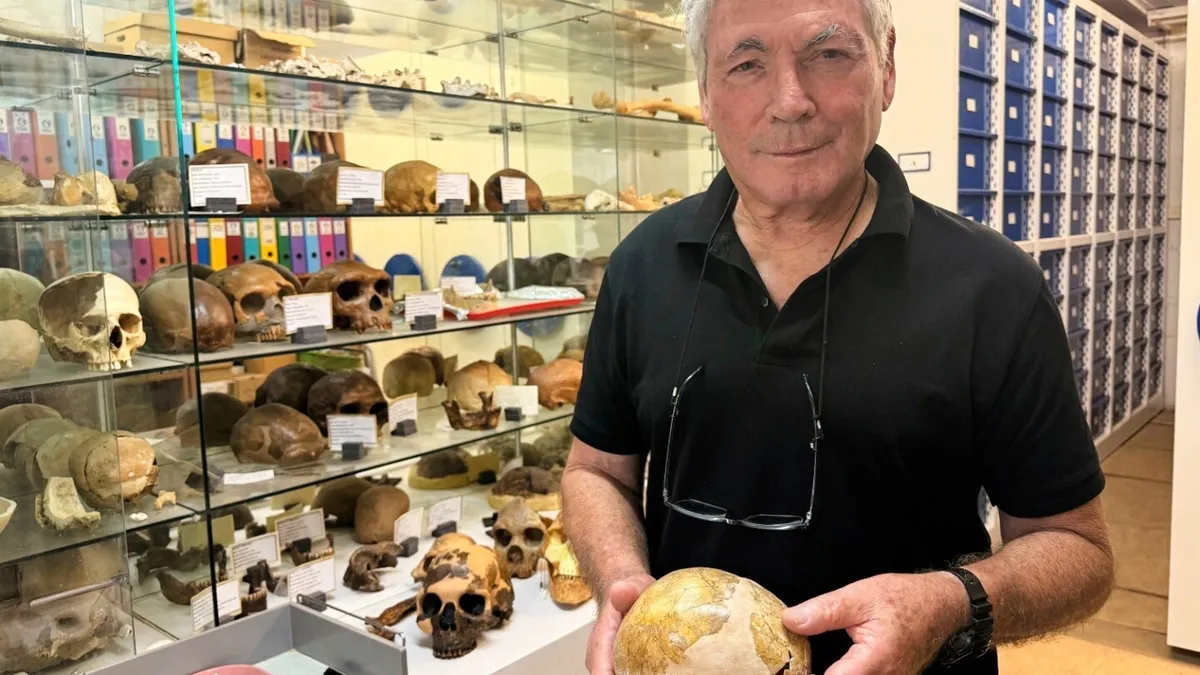
TEL AVIV, Israel (AP) — Groundbreaking research suggests that modern humans and Neanderthals were interacting as early as 140,000 years ago, significantly earlier than the previously accepted timeline of 40,000 years ago. Utilizing advanced CT scans and 3D mapping techniques, researchers studied the bones of a child believed to be the product of interbreeding between these two distinct groups. This remarkable finding was published in the peer-reviewed journal L’Anthropologie.
The child, whose remains were discovered in Skhul Cave in northern Israel in 1931, was buried approximately 140,000 years ago. Despite the absence of ancient DNA to definitively prove the child's origins, scientists have identified microscopic features in the bones that showcase traits from both Homo sapiens and Neanderthals. Initial excavators concluded the child did not belong to either species and was instead a distinct species native to the region. However, recent advances in technology have allowed for a deeper understanding of the skeletal remains.
Through the process of creating a virtual 3D model of the child's skull and jaw, researchers could analyze fine details that were previously undetectable. The mapping enabled the study of unique characteristics, such as the structure of the inner ear and the imprint of blood vessels supplying the brain. By comparing these features with known traits of both modern humans and Neanderthals, the research team concluded that the child was likely the result of interbreeding.
Lead researcher Israel Hershkovitz, a professor of archaeology and human evolution at Tel Aviv University, emphasized that this study offers new insights into the nature of relationships between the two groups. “What we’re saying now is that there was an extensive relationship between Homo sapiens and Neanderthals that started around 140,000 years ago,” Hershkovitz stated. He noted that they coexisted without evidence of conflict, challenging previous assumptions that modern humans were intolerant of other human groups.
While the study presents compelling evidence for the hybrid hypothesis, the lack of DNA makes it impossible to conclusively prove the child’s lineage. Pascal Gagneux, an evolutionary biologist at the University of California San Diego, who was not involved in the study, acknowledged that the internal structure of the bones supports the idea of interbreeding but reiterated the importance of genetic evidence.
The researchers employed thousands of isolated scans to create the 3D model, allowing them to visualize intricate details within the skull. For example, the blood vessels leave distinct imprints on the inside of the skull, which are recognizable in the scans. The technology enabled a more accurate reconstruction of the child’s skull, revealing an elongated shape typical of Neanderthals. However, many questions remain, such as the identities of the child's parents and the reasons behind the burial.
Skhul Cave is one of three significant sites in the region known for some of the oldest known intentional burials, dating back more than 100,000 years to the middle of the Paleolithic era. The cave's excavation continues to yield more remains, offering potential for further discoveries. In ancient times, Israel served as a crucial land bridge for interactions between Neanderthals and modern humans.
Contrary to the belief that Homo sapiens were responsible for the decline of Neanderthals due to violent interactions, Hershkovitz argues that the evidence from Skhul Cave suggests otherwise. “What Skhul is telling us is that Homo sapiens are not a vicious, aggressive creature, but one that managed to live in peace with other groups,” he asserted. This finding encourages a reevaluation of the narrative surrounding human aggression, suggesting it has cultural, rather than biological roots.